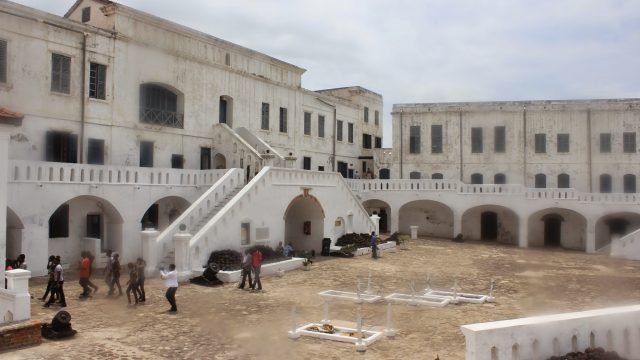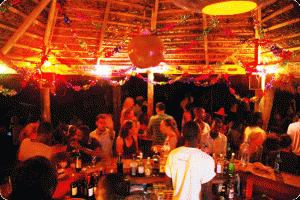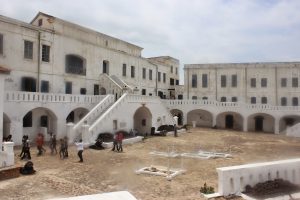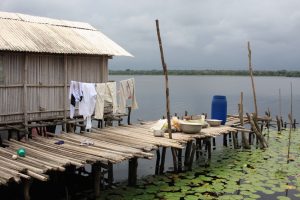My first visit to Ghana was as a volunteer in a former Liberian refugee camp called Buduburam. Located on the country’s main southern highway (the N1), the years I spent coming and going from “Little Liberia” provided me with the perfect base to explore the country more broadly. I fell in love with the personality, diversity and ease of traveling in Ghana – and have since returned many times for work and pleasure.
Tourism to Ghana has been steadily increasing for the past 20 years, according to the World Economic Forum. In 2013, it was ranked the 14th most-visited African country, sitting just below superstars like South Africa, Namibia, Kenya and Tanzania. The country’s primary attractions are largely cultural and natural, with some wildlife-rich areas scattered throughout. In recent years, it has become especially popular with business travelers and “volontourists.”
As a first-timer in Ghana, I focused my attention on the sights that lined the N1 highway. This allowed me to maximize my weekends away from work with the short travel times between sights. There was most definitely enough diversity in destinations to keep me enthralled, engaged and always excited for more. What follows is my personal account of the highlights and the essential information necessary for an unforgettable fist trip.
Getting Around: Understanding the Tro-tro Madness
Ghanaian minibuses are referred to as tro-tros. They course along the country’s highways, connecting cities with towns, villages and seemingly everything in between. In spite of an illusion of chaos, the tro-tros do in fact follow a predictable series of routes that can be navigated with a combination of hand signs. Swirling pointer fingers in the air should, in theory, indicate a desire to travel to Accra’s central Kwame Nkrumah Circle, while pointing up and down indicates short and long distance preferences respectively (… or, was it the other way around?).
As a first-timer, keeping the wrist flicks and finger swishes straight caused no end of stress. Thankfully however, each bus is staffed by both a driver and a “mate.” The mate sits at the sliding door, and is responsible for recruiting and managing passengers. Many fill this role with no end of enthusiasm and exuberance. In fact, I often remember being nearly convinced by some mates to switch my travel plans to ride on their tro.
The mate is also the person you can wave at wildly when you realize you have missed your intended destination. Travelers with more foresight may even consider asking him to alert them when they are nearing their stop, in order to save a bit of chaos and embarrassment.
Privately hired vehicles and large bus companies are of course also other modes of transportation – however, they are hardly as efficient, customizable or thrilling as the tro-tro. For volontourists in particular, there are few better ways to get around.
Where to Go: Ghana’s Southern Hotspots
One of my favourite features of Ghana is that even the hottest of hot spots tend to be laid back, relatively untouched, quiet and unique. I was always especially appreciative too of the unique mix of individuals that opted to travel the country, and the richly varied stories they brought with them.
The following three destinations are among my personal favourites for easy weekend getaways for business travelers and volontourists alike. They are of course also essential stops for those on longer vacations as well!
Kokrobite and Big Milly’s
This southern institution is a coveted seaside escape for locals and internationals working in and around the capital. Dusty beach tracks lead down to a sleepy Rastafarian-dominated beach town on the edge Atlantic Ocean. Visitors wander between the ocean, beachside bars, a few delightful restaurants and coffee shops before eventually congregating at Big Milly’s for live music and dancing under the stars. Sip on a Star beer and lose yourself in the magic of the evening before waking up, slightly groggy, to some rich pressed coffee.
The only downside to Kokrobite is that the beach could most certainly benefit from a few tidying projects. That said, the area’s vibe almost completely makes up for the rougher ocean that is too often littered with specks of floating garbage.
Cape Coast and the Castle
West Africa’s history of slave trade is firmly encapsulated by Cape Coast Castle. This white wash fortress towers over the city more broadly, reminding guests of the region’s past. Modifications to the castle have been slight, providing visitors with vivid imagery of the slave trade as it perhaps once was. The only major alteration that occurred was digging out feet of human waste that created an artificial floor in the holding cells. Scratches remain on the wall that highlight this process. The tour is sobering, memorable and absolutely essential on a visit to Ghana. I would highly recommend taking a guided tour at least once, to fully contextualize your visit.
Guests are of course permitted to explore the grounds freely. I always enjoyed spending a day on the weekend walking this now-tranquil castle, eventually making my way to the eastern windows that overlook a primary fishing beach. The serenity of Cape Coast Castle is starkly contrasted by the slew of brightly painted fishing boats that race in and out of this vibrant beach, and the children that leap and frolic in the gentle surf between.
Kakum National Park
Ghana has a wonderful diversity of nature-based destinations that offer an excellent reprieve from this rapidly developing country. A personal favourite, both in terms of accessibility and beauty, is Kakum. This small 375km2 rainforest is bisected by a number of hiking trails, most of which lead up to a breathtaking suspension walkway, 30m above the ground in the forest canopy. A series of seven swaying bridges lead visitors to various viewing platforms, from which you can see some of the forest’s tallest remaining trees.
Wildlife-wise, you are most likely to spy a rich variety of butterflies and insects. Primates and elephants are rumoured to live here, but both are extremely rare, with elephants being debatably extinct. For them, you will need to travel quite far north to Mole National Park…
Other Favourite Spots on the N1
Of course a first visit to Ghana can extend well beyond those top three sights. The following destinations are equally as spectacular, and add excellent diversity to the aforementioned stops along the N1.
- Axim Stilt Village: A mysterious village built entirely on stilts on a lake just beyond the town of Axim. Travel to this destination by dugout canoe, and listen to the (often-changing) history, as told by the village chief.
- Busua Beach and Butre Village: A slightly lesser-known beachside getaway alternative to Kokrobite.
- Ada Foah and the Ada Estuary: A stunning and remote escape on the peninsula where lake and ocean combine.
- Accra: Ghana’s capital city is filled with attractions that span from eating to shopping to live music.





